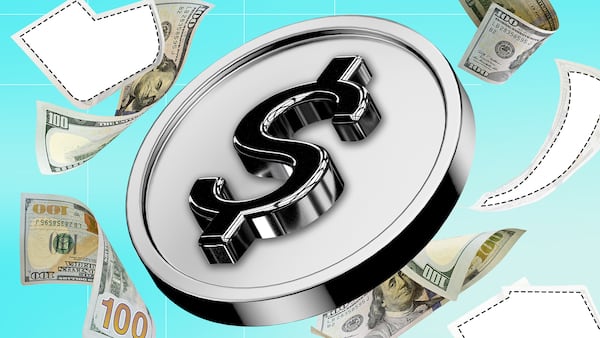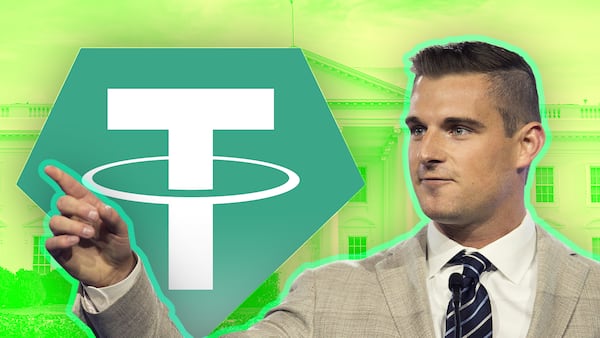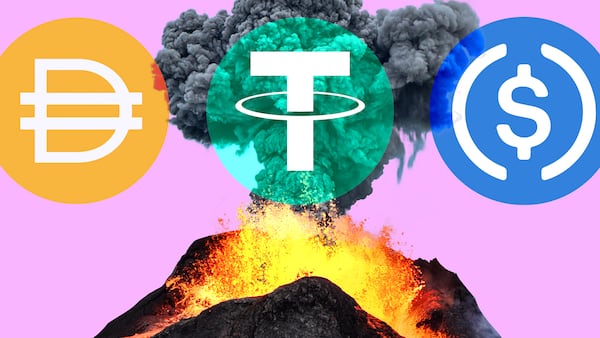- Tether’s fortunes are changing.
- After years of legal fighting, it’s returning to the US.
- CEO Paolo Ardoino is bullish about its new stablecoin’s chances.
Just a month after announcing its arrival in the US, Tether’s CEO, Paolo Ardoino, is already painting a bullish future for the venture’s newest digital dollar.
The industry’s largest stablecoin issuer is launching a new stablecoin, USAT, specifically for the American market. Bo Hines, formerly the head of the White House’s Council of Advisors on Digital Assets, is helming the enterprise as its CEO.
During a panel discussion at the crypto confab Token2049 in Singapore on Thursday, Ardoino has little doubt his newest token will be a success.
“My target for USAT in the next three to five years would be about $1 trillion,” Ardoino said. “It’s realistic because of the velocity at which we are seeing USDT grow.”
Also featured on the panel, Anchorage Digital CEO, Nathan McCauley, suggested the T in USAT stands for “trillions.” Anchorage Digital, the only crypto-native company with a federal banking charter, is the issuer of USAT.
The comments come as bullishness around Tether is surging. The stablecoin issuer is reportedly looking to raise $20 billion from investors at a $500 billion valuation, which would put it at the same size as tech giants like OpenAI.
Enthusiasm around Tether and the success of USAT revolves primarily around the reopening of the US to the industry.
Chequered past
Long excluded from the US, the $174 billion stablecoin USDT is quickly capitalising on a friendlier regulatory shift in the US.
In 2021, Tether settled an $18.5 million fine with the New York Attorney General’s office and agreed to exit the state over claims the issuer misrepresented its reserve assets.
That same year, Tether and Bitfinex also settled a $41 million settlement with the US Commodity Futures Trading Commission for similar allegations.
In 2024, a United Nations reporter characterised USDT as “a preferred choice” for fraudsters and money launderers in East and Southeast Asia.
“We are disappointed in the UN’s assessment that singles out USDT, highlighting its involvement in illicit activity while ignoring its role in helping developing economies in emerging markets,” the company said in a statement at the time.
‘Very expedited journey’
Since US President Donald Trump entered office in January, however, Tether’s fortunes — and good press — has changed dramatically.
Trump, who ran a campaign to turn the US into “the crypto capital of the world,” issued a slew of executive orders focused on digital assets and signed into law landmark stablecoin legislation.
Trump appointees at the Securities and Exchange Commission have also dismissed or delayed several investigations into crypto companies, including Coinbase and Binance.
For Tether, the passage of stablecoin laws in July, called Genius Act, has been a prime catalyst for its return to the country. Anchorage Digital is also one of the first Genius-compliant stablecoin issuers.
“I personally have never been to the United States until the second of March 2, 2025,” Ardoino said on stage. “And July 18, I was shaking the hand of President Trump. It’s kind of like an interesting, very, very expedited journey.”
USAT is expected to offer a stablecoin product to institutions in the US looking to provide their clients with digital dollars.
It will also offer international users of USDT, Tether’s primary demographic, the ability to better access the US financial system, said Ardoino.
“USDT and USAT will be fully interoperable, one-to-one swappable,” he said. “You can have a super seamless user experience that will mask the complexity of having two products at the same time.”
Liam Kelly is DL News Berlin-based DeFi Correspondent. Got a tip? Email at liam@dlnews.com.









